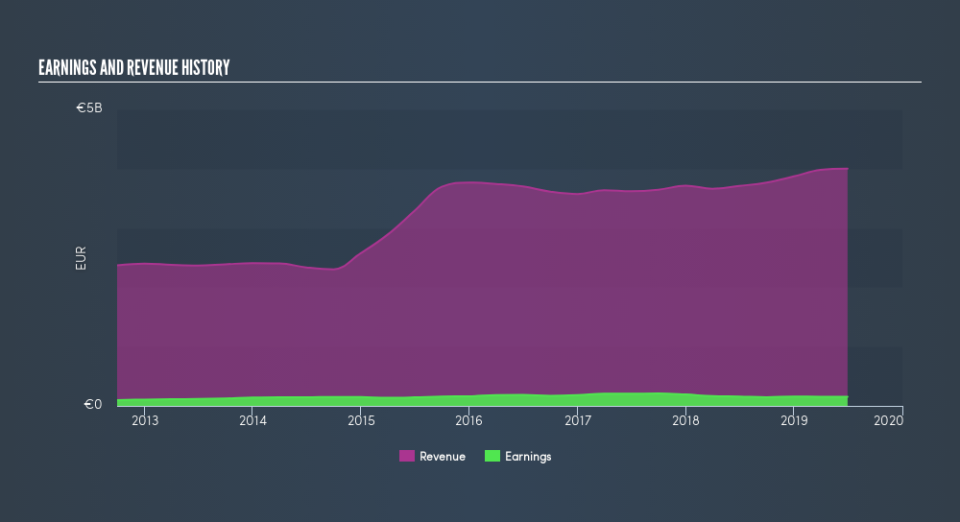Where Dürr Aktiengesellschaft's (FRA:DUE) Earnings Growth Stands Against Its Industry

Examining Dürr Aktiengesellschaft's (FRA:DUE) past track record of performance is an insightful exercise for investors. It allows us to reflect on whether or not the company has met or exceed expectations, which is a great indicator for future performance. Today I will assess DUE's latest performance announced on 30 June 2019 and compare these figures to its longer term trend and industry movements.
Check out our latest analysis for Dürr
Did DUE perform worse than its track record and industry?
DUE's trailing twelve-month earnings (from 30 June 2019) of €152m has declined by -3.9% compared to the previous year.
Furthermore, this one-year growth rate has been lower than its average earnings growth rate over the past 5 years of 1.9%, indicating the rate at which DUE is growing has slowed down. Why is this? Well, let's look at what's transpiring with margins and whether the rest of the industry is feeling the heat.
In terms of returns from investment, Dürr has fallen short of achieving a 20% return on equity (ROE), recording 16% instead. Furthermore, its return on assets (ROA) of 4.7% is below the DE Machinery industry of 5.0%, indicating Dürr's are utilized less efficiently. And finally, its return on capital (ROC), which also accounts for Dürr’s debt level, has declined over the past 3 years from 17% to 13%.
What does this mean?
Dürr's track record can be a valuable insight into its earnings performance, but it certainly doesn't tell the whole story. Generally companies that endure a drawn out period of decline in earnings are going through some sort of reinvestment phase Although, if the whole industry is struggling to grow over time, it may be a indicator of a structural change, which makes Dürr and its peers a riskier investment. I suggest you continue to research Dürr to get a better picture of the stock by looking at:
Future Outlook: What are well-informed industry analysts predicting for DUE’s future growth? Take a look at our free research report of analyst consensus for DUE’s outlook.
Financial Health: Are DUE’s operations financially sustainable? Balance sheets can be hard to analyze, which is why we’ve done it for you. Check out our financial health checks here.
Other High-Performing Stocks: Are there other stocks that provide better prospects with proven track records? Explore our free list of these great stocks here.
NB: Figures in this article are calculated using data from the trailing twelve months from 30 June 2019. This may not be consistent with full year annual report figures.
We aim to bring you long-term focused research analysis driven by fundamental data. Note that our analysis may not factor in the latest price-sensitive company announcements or qualitative material.
If you spot an error that warrants correction, please contact the editor at editorial-team@simplywallst.com. This article by Simply Wall St is general in nature. It does not constitute a recommendation to buy or sell any stock, and does not take account of your objectives, or your financial situation. Simply Wall St has no position in the stocks mentioned. Thank you for reading.

